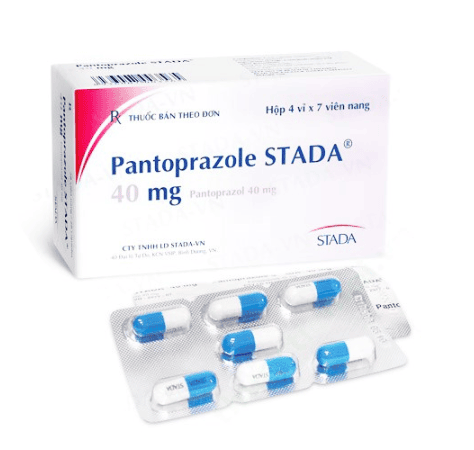This is an automatically translated article.
Balsalazide is used in the treatment of ulcerative colitis and Crohn's disease. However, Balsalazide can cause some unwanted side effects. Therefore, before using Balsalazide, patients need to learn carefully the information and follow the doctor's instructions during treatment.
1. What is Balsalazide?
What is Balsalazide? Balsalazide consists of the compound mesalazine which is linked to the 4-aminobenzoly b alanine carrier molecule via an azo bond. Bacterial azo reduction releases the compound mesalazine as an active metabolite in the colon. Moreover, this compound also acts as a local enteric anti-inflammatory agent on the colonic mucosa. And the exact mechanism of action of the mesalazine compound, although not clearly presented, when the mesalazine compound is combined with Balsalazide contributes to the effect of the drug.
Mesalazine also inhibits cycloozzygenase, which forms prostaglandins in the colon. Therefore, Balsalazide has a local inhibitory effect against the production of metabolites of arachidonic acid that are often increased in patients with chronic inflammatory bowel disease.
2. What are the uses of Balsalazide?
Balsalazide is indicated in the treatment of ulcerative colitis and Crohn's disease. In addition, Balsalazide also helps relieve symptoms related to diarrhea, rectal bleeding and stomach pain
However, Balsalazide is also contraindicated in subjects with hypersensitivity to the components of the drug, or subjects with a history of hypersensitivity to salicylates, severe hepatic impairment, moderate and severe renal impairment, pregnant women and lactating women.
3. Dosage and how to use the drug Balsalazide
Balsalazide is indicated in both active disease treatment and maintenance therapy.
With the case of active disease treatment, Balsalazide is indicated to be used with a dose of 2.25 grams of Balsalazide disodium, corresponding to 3 tablets and used 3 times a day until symptom relief or maximum use in 12 weeks. In addition, patients can use rectal steroids concurrently in case of need.
For maintenance treatment, use Balsalazide with a starting dose of 1.5 grams of Balsalazide disodium, corresponding to 2 tablets and use this twice. The dose of Balsalazide can be adjusted based on individual patient response and there may be some additional benefit with the recommended dose up to 6 grams per day.
Treatment for Crohn's disease is recommended with doses ranging from 2 to 6 grams per day.
Note: The above recommended therapeutic dose for Balsalazide is for reference only. Therefore, before using Balsalazide, patients should be prescribed by a doctor.
If the patient has missed a dose of Balsalazide, use the missed dose as soon as you remember. However, if the interval between the missed dose and the next dose is too close, skip the missed dose. Patients should not double the dose of Balsalazide, because it can cause an overdose.
In case the patient accidentally takes an overdose of Balsalazide than prescribed and shows some unwanted signs, it is necessary to take the patient to an emergency at the nearest medical facility.
4. Undesirable side effects of Balsalazide drug
Balsalazide medicine can cause some unwanted side effects during treatment such as agitation, confusion, depression, dark urine, decreased urine content.
In addition, some cases may experience symptoms of bladder pain, cloudy urine, difficulty urinating, burning and even pain, pale skin, difficulty breathing, unusual bleeding or bruising...
5. Balsalazide drug interactions
Balsalazide drug interactions with other drugs:
Balsalazide consists of acetyl metabolites that are actively excreted in the renal tubules with high levels. Therefore, the plasma concentrations of the prescribed drug can be eliminated by this route and in this case, caution should be taken when using drugs with a narrow therapeutic range such as methotrexate. However, in Balsalazide mesalazine and N-acetyl mesalazine are Chemically, salicylates have similar properties and kinetics to salicylates and are unlikely to interact with acetylsalicylic acid. Balsalazide used concurrently with sulphasalazine reduces the absorption of digoxin. Balsalazide contains Mesalazine which inhibits thiopurine methyltransferase. Therefore, in patients taking azathioprine or 6-mercaptopurine, caution should be exercised when co-administering balsalazide. Because it is possible that this combination will increase the possibility of neuro-blood disorders. Besides, Balsalazide should be used with caution in cases of asthma, bleeding disorders, mild renal failure or those who have ever had liver disease When using Balsalazide, patients need to monitor kidney function before taking it, after 3 months of treatment and periodically check annually. During treatment with Balsalazide, a complete blood count and urinalysis should be performed. Because of the cases in which patients taking Balsalazide should be informed of unexplained bleeding, bruising, purpura, etc., that occurred during treatment. Or it may be necessary to perform a complete blood count and discontinue Balsalazide if a coagulopathy is suspected.
Please dial HOTLINE for more information or register for an appointment HERE. Download MyVinmec app to make appointments faster and to manage your bookings easily.













